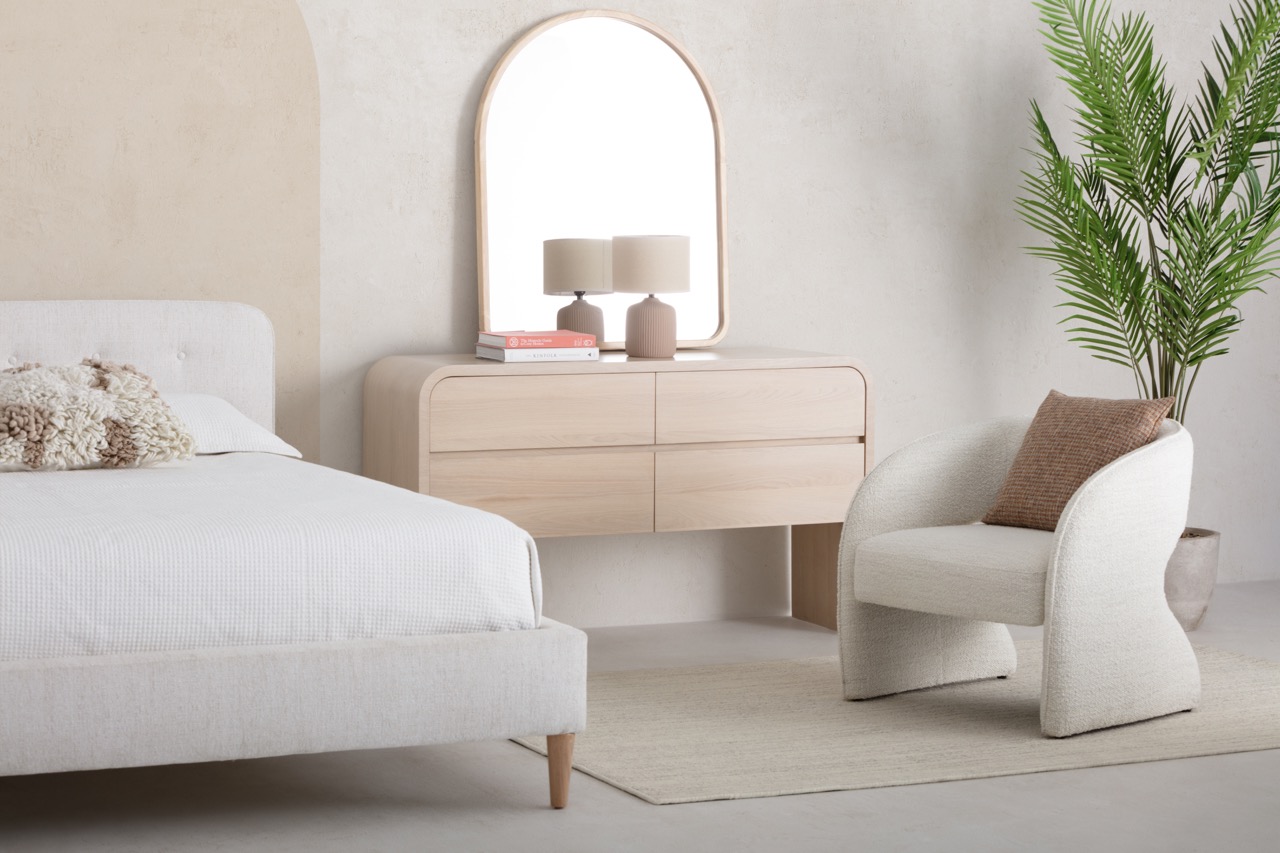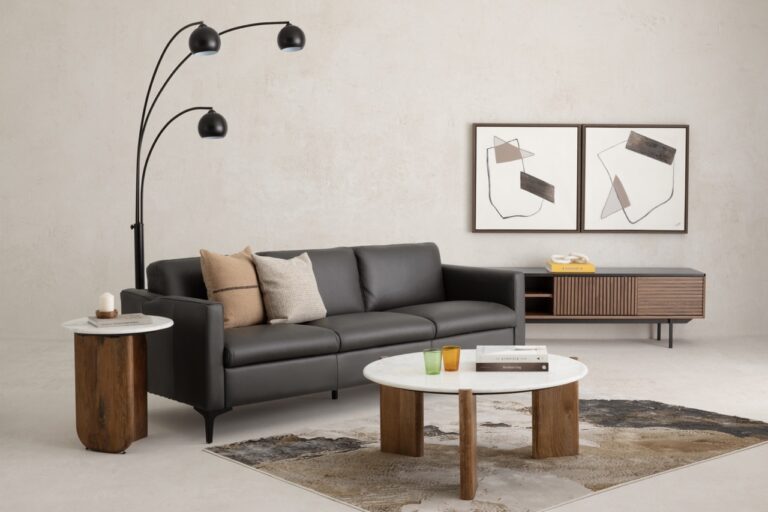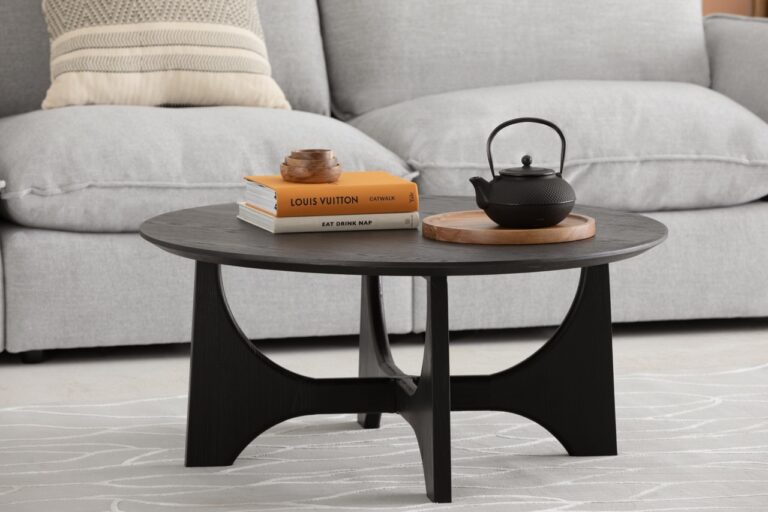Choose the right mattress
At the heart of every sleep-friendly bedroom is the mattress.
It’s not just about having a bed; it’s about having the right bed for you. A comfortable and supportive mattress can be the difference between a restful night and a restless one. So, what should you look for?
First, consider the firmness. Your weight, preferred sleeping position, and personal comfort preferences all play a role in determining the ideal firmness. Some points to consider:
- Side sleepers might benefit from a softer mattress that alleviates pressure points, while back or stomach sleepers might prefer firmer support.
- The taller and heavier the sleeper, the firmer the mattress should be. By contrast, light weight people require more flexible support.
- For couples with differing body shapes, there are custom-made mattresses today that can meet the needs of both sleepers by incorporating two different levels of firmness.
Next, think about the material. Memory foam mattresses are known for their pressure relief and motion isolation, making them a popular choice. Lastly, don’t forget about the size. Your mattress should provide enough space for comfortable movement, especially if you share your bed with a partner.
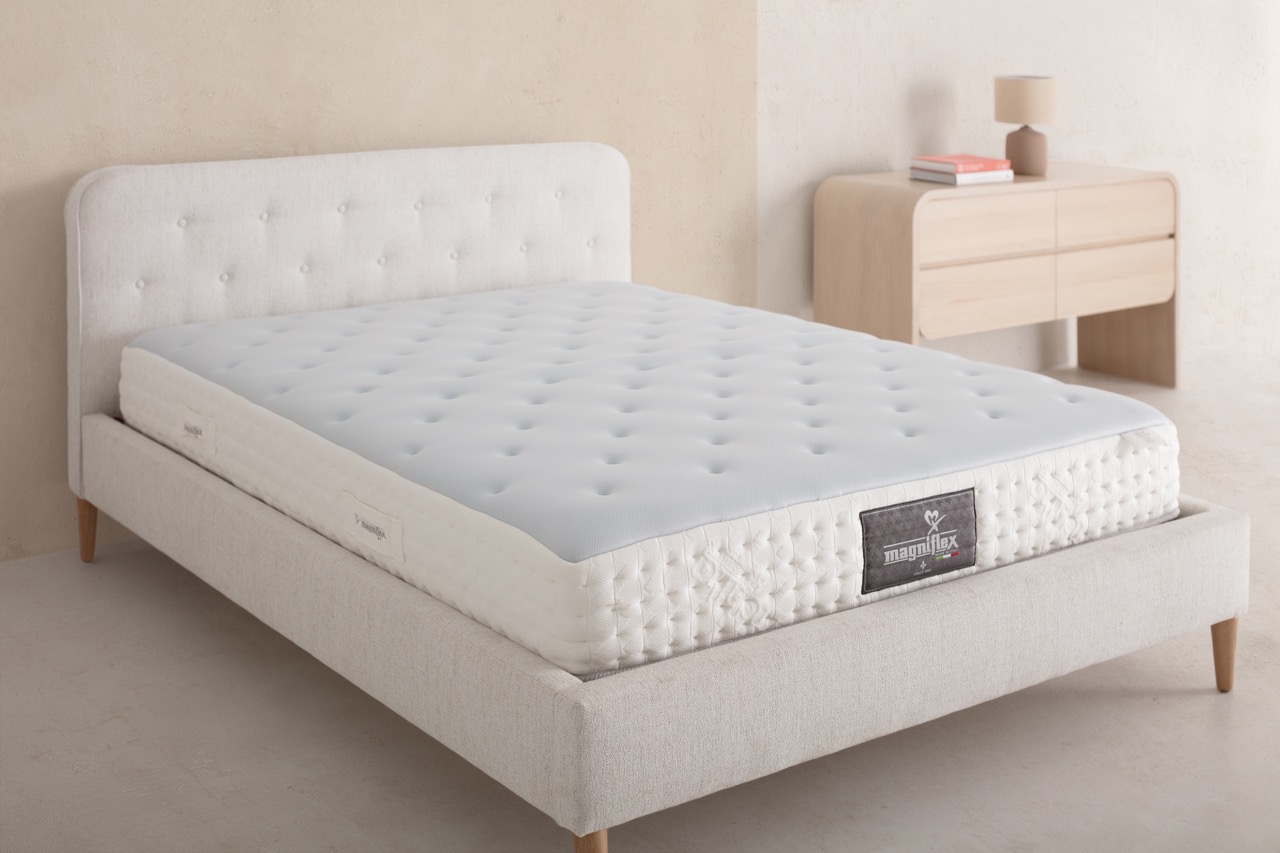
Considering a new mattress? Here are the questions you should ask when looking for a replacement.
Create a quiet, clutter-free environment
The bedroom should be the quietest room in the house. Treat it as a sacred spot, a safe place to unwind and decompress, where you can deliver yourself into the arms of Morpheus, allowing you to recharge so that you’re ready to rise and face the day ahead.
A cluttered bedroom can subconsciously affect your ability to relax and fall asleep. Aim for a minimalist approach, with only essential furniture and decor. Keep surfaces clear and choose storage solutions that hide away the mess.
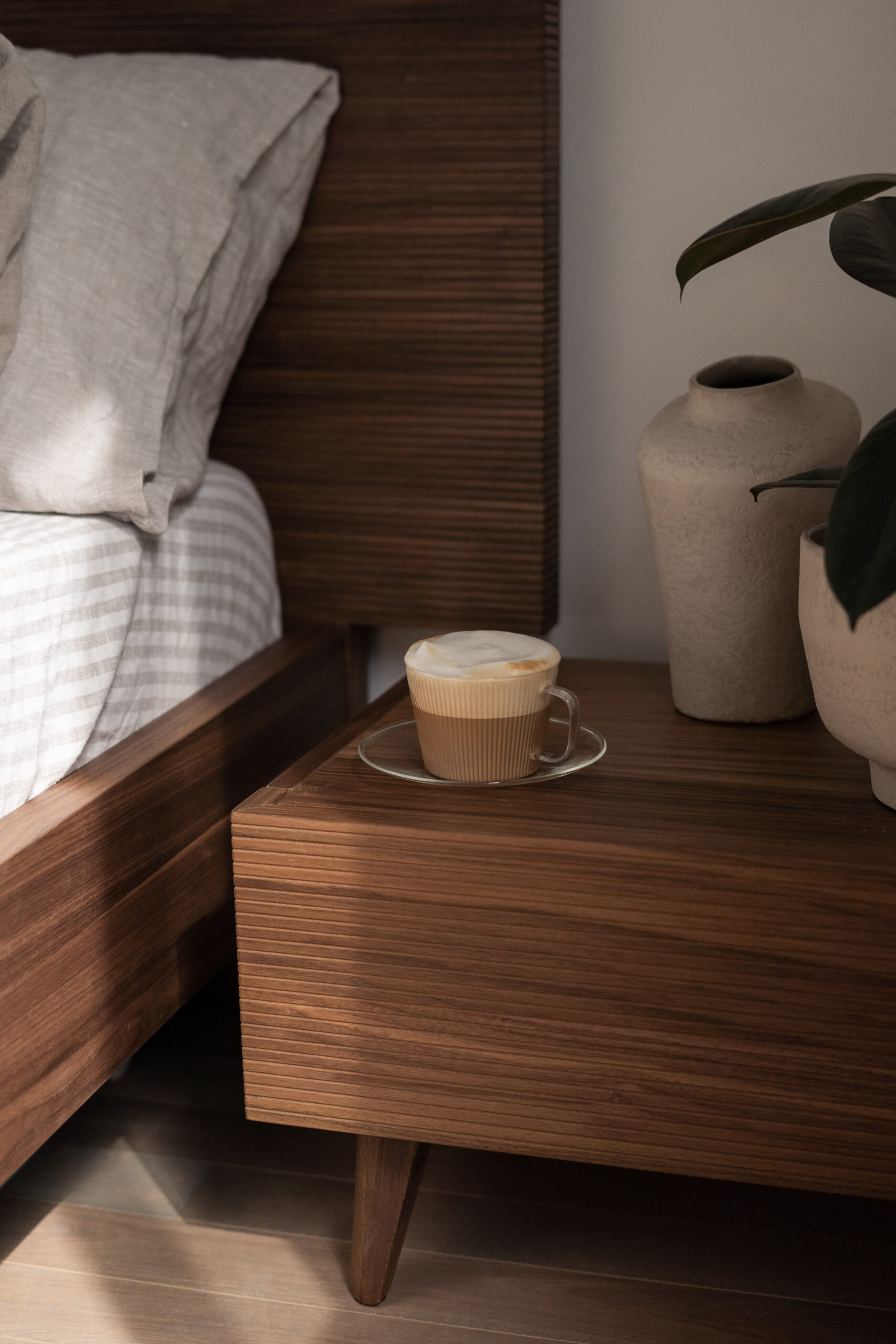
This not only creates a more pleasing visual space but also reduces the mental clutter that can prevent you from unwinding at the end of the day.
In this regard, nightstands like the Eckhart and Wendale models can play a significant role.
The Eckhart nightstand, with its classic mid-century design and a brilliant mix of walnut veneer and solid wood, is perfect for those who appreciate a retro touch in their bedroom. Its dimensions (22″ x 16″ x 13.5″) make it an ideal choice for keeping your night essentials within reach without cluttering the space.
On the other hand, the Wendale nightstand brings a modern and elegant feel to the bedroom. It features a grey lacquered wood structure and black metal legs, creating a harmonious contrast that can complement any contemporary decor. The inclusion of two soft-closing drawers ensures practicality and convenience, offering ample storage while maintaining a sleek look.
Regulate your bedroom’s temperature
The temperature of your bedroom is crucial for quality sleep. If your room is too hot or too cold, it can disrupt your sleep, leading to restlessness or frequent awakenings. Most experts agree that a cool room, around 17-18 degrees Celsius, is ideal. This temperature supports the natural drop in body temperature that occurs during sleep.
Consider investing in a thermostat that can be programmed to adjust the temperature automatically for nighttime. Additionally, the right bedding can help regulate body temperature. For instance, breathable materials like cotton are excellent for warmer months, while flannel can provide extra warmth in colder seasons.
Also pay attention to the air quality in your bedroom. Fresh, clean air can significantly improve your sleep quality. Consider using an air purifier or keeping a window slightly open to allow for ventilation.
Optimize lighting to follow your biological clock
Exposure to light during the day helps maintain our circadian rhythm by activating the production of serotonin, the hormone involved in mood management and associated with happiness.
In the late evening, however, excessive or harsh lighting can hinder the production of melatonin, the hormone that signals our body it’s time to sleep. The secretion of melatonin increases at the end of the day shortly before bedtime, helping us fall asleep. It reaches its peak between 2 and 4 a.m. and then gradually falls to negligible levels early in the morning, shortly after waking up.
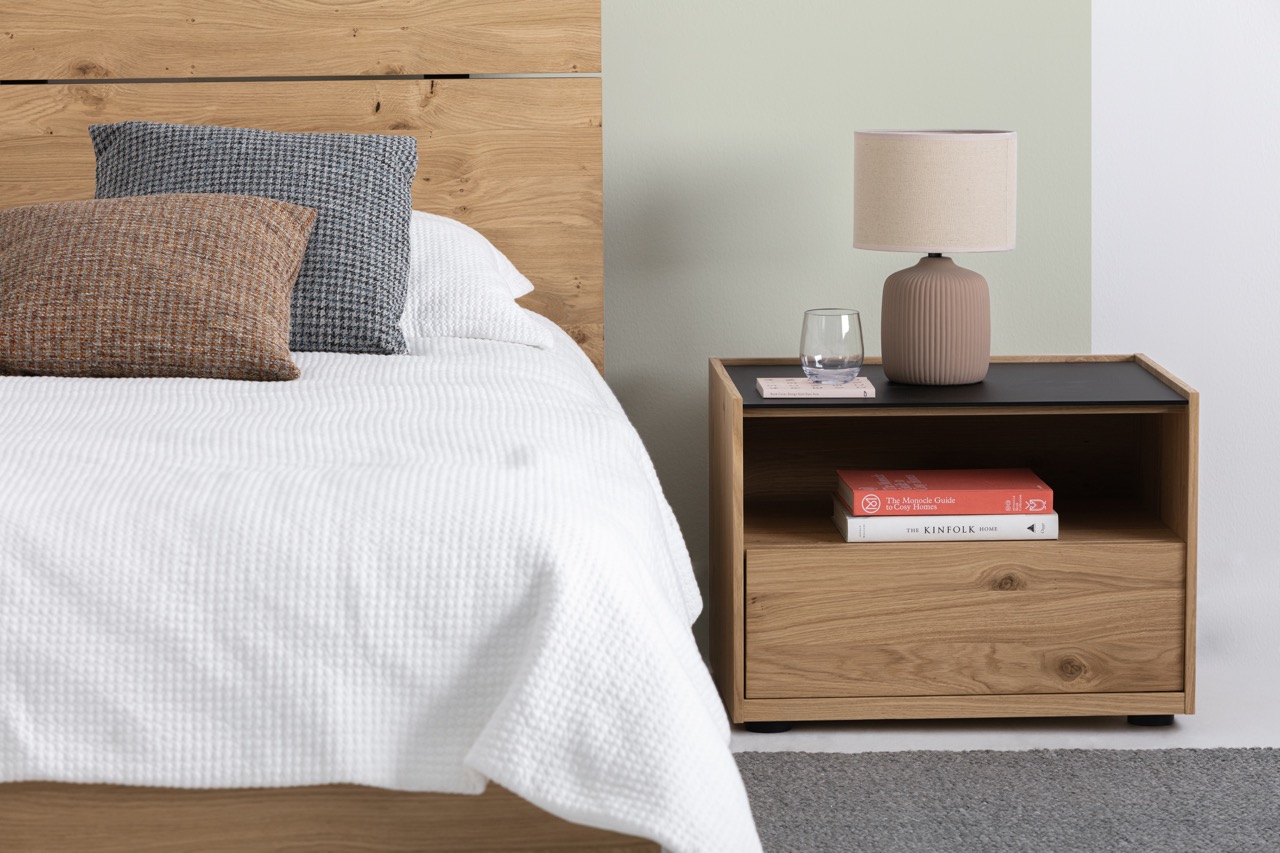
Exposure to light in the evening delays the biological clock, and thus the production of melatonin and drowsiness. To create a sleep-friendly lighting environment, consider using dimmer switches or lamps with warm-toned bulbs. These options allow you to reduce the intensity of light as bedtime approaches, signaling to your body that it’s time to wind down. Blackout curtains are also a great investment, particularly for those sensitive to early morning light or street lamps.
Looking for the ideal bedside lamp for your bedroom? Remember, for ergonomic reasons, your bedside table should be about the same height as the top of your mattress, which often means choosing proportionally lower bedside lamps.
Read our detailed guide for more insights on selecting the perfect table lamp.
The role of colours and textures
Colours and textures in a bedroom aren’t just about style; they’re about setting the stage for relaxation and sleep. The colours we surround ourselves with can have a significant impact on our mood and sleep quality. Soft, soothing hues like cool blues, gentle greens, and muted grays can create a calming atmosphere, conducive to unwinding and drifting off to sleep.
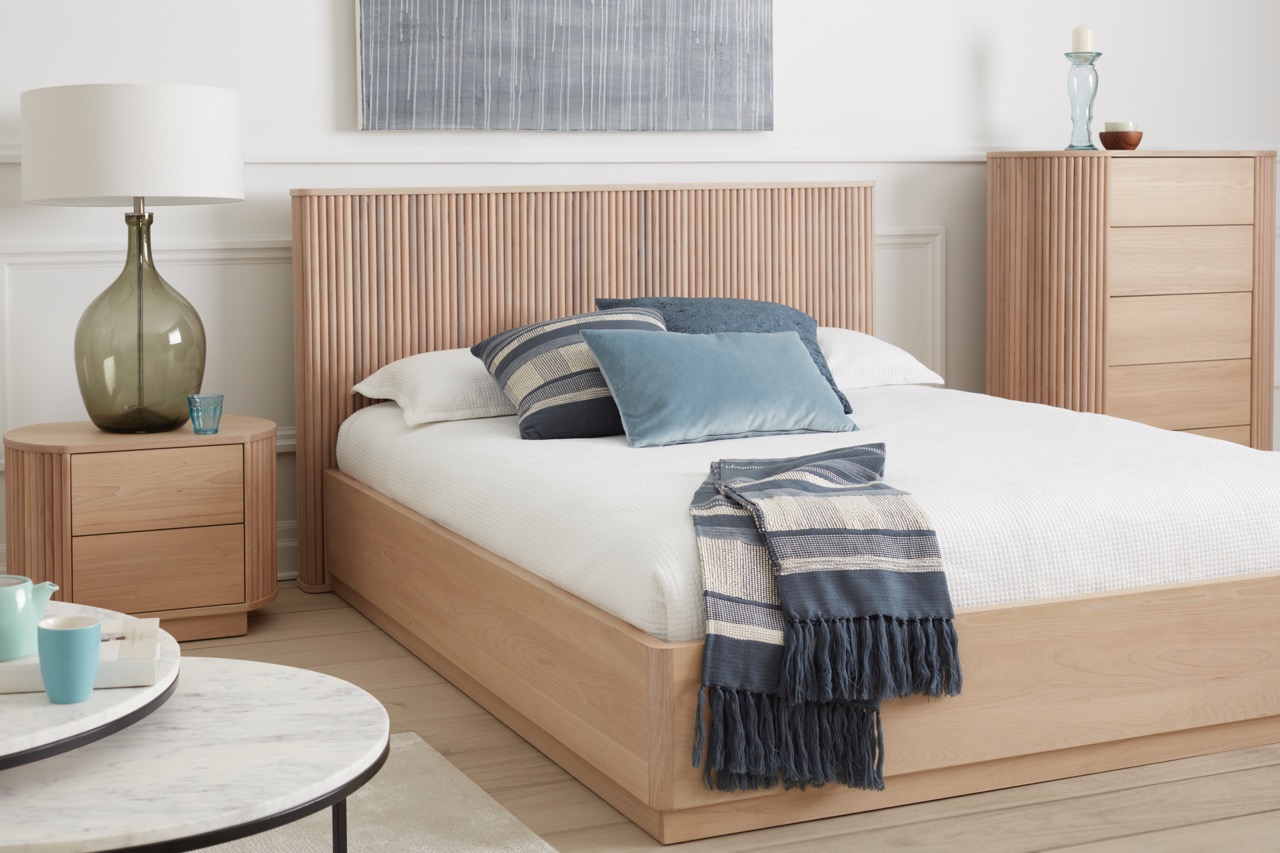
When it comes to textures, the goal is comfort. Luxurious bedding can make a big difference. Opt for natural fibers like cotton or linen, which breathe well and help regulate body temperature. The feel of your bedding should invite you to curl up and relax. Plush pillows, a cozy throw, and a soft rug underfoot can add layers of comfort and warmth to your sleep sanctuary.
Creating a sleep-friendly bedroom is about more than just aesthetics; it’s about cultivating an environment that supports your health and well-being. By focusing on the right mattress, soothing colours and textures, appropriate lighting, optimal room temperature, and a clutter-free space, you can transform your bedroom into a sanctuary of sleep.
Sweet dreams!

